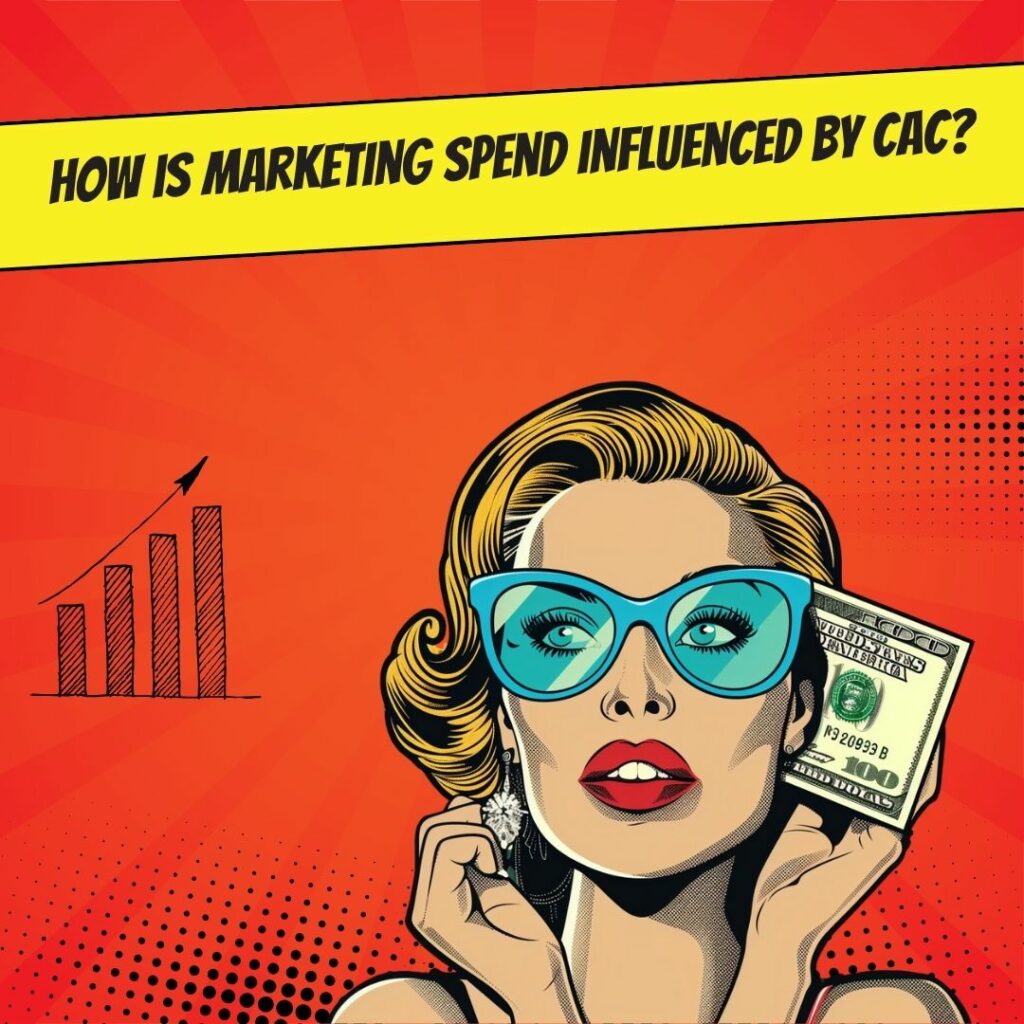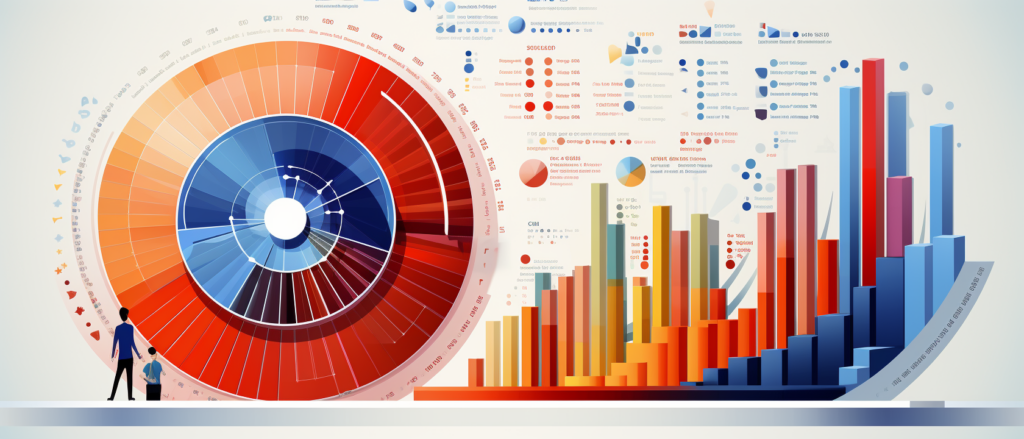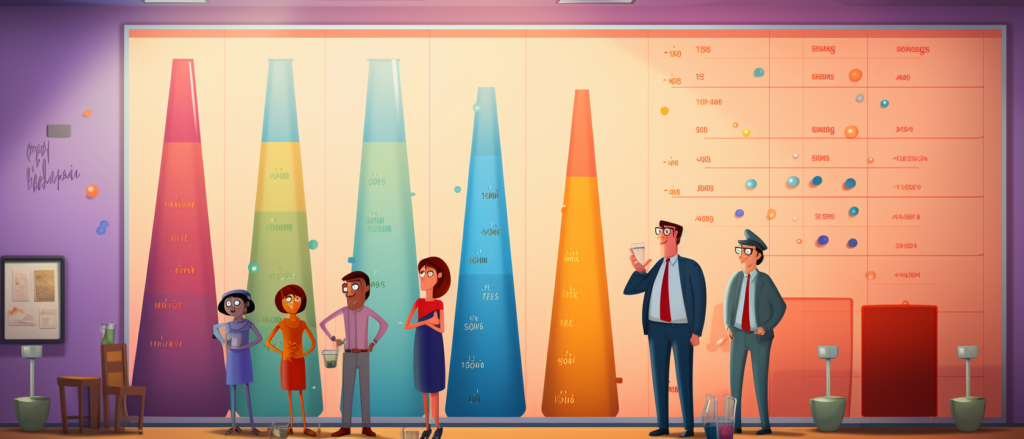Key Takeaways
✅ Influence on Budget Allocation: Understanding CAC helps businesses allocate their marketing budget more effectively. Companies that monitor and optimize their CAC can reduce marketing spend by up to 20%, ensuring funds are directed towards the most cost-effective acquisition channels .
✅ Impact on Profit Margins: High CAC can significantly erode profit margins. Businesses that fail to manage their CAC effectively may experience a decrease in profit margins by up to 15%, as more revenue is consumed by the cost of acquiring new customers rather than contributing to the bottom line .
✅ Return on Investment (ROI): Tracking CAC is crucial for improving marketing ROI. Firms that strategically manage their CAC can see a 25% increase in marketing ROI. This is achieved by focusing on channels that provide the highest return relative to the cost of customer acquisition.

Introduction
In today's fiercely competitive market, understanding the financial dynamics behind acquiring new customers is crucial for any business aiming to thrive. Customer Acquisition Cost (CAC) stands at the forefront of this financial insight, representing the total expenditure required to attract a new customer. This metric is not just a number on a balance sheet; it is a vital indicator of a company's marketing efficiency and overall health. As marketing budgets continue to swell, grasping the intricacies of CAC can spell the difference between a thriving enterprise and one that is struggling to keep its head above water.
Marketing spend is directly influenced by CAC, shaping the way businesses allocate their resources. A high CAC can drain budgets, leaving less room for innovation and growth, while a well-managed CAC can boost profit margins and enhance return on investment (ROI). Companies that fail to monitor and optimize their CAC may find themselves caught in a cycle of diminishing returns, where increased spending does not translate into proportional revenue growth.
Conversely, those that master their CAC can deploy their marketing dollars more effectively, ensuring that every cent spent is driving meaningful customer engagement and sustainable business growth. Understanding and optimizing CAC is not just a financial necessity; it is a strategic imperative that can empower businesses to make smarter, more impactful decisions in their marketing efforts.
Understanding Customer Acquisition Cost (CAC)
Customer Acquisition Cost (CAC) is a fundamental metric used to determine the total average cost a business incurs to gain one new customer. This figure is pivotal as it helps businesses decide how much they're willing to spend on marketing to attract a customer and still make a profit. Understanding CAC not only helps in budget allocation but also in assessing the effectiveness of marketing strategies and channels.
Calculating Customer Acquisition Cost (CAC)
The formula for calculating CAC is straightforward: CAC = Total Marketing Expenses / Number of Customers Acquired. This includes costs such as advertising spend, salaries of marketing teams, production of marketing materials, and any other expenses directly related to marketing. The trick lies in accurately categorizing and tracking these expenses, as overlooking minor costs can lead to underestimating the CAC.
The Relationship Between CAC and Marketing Spend
How does CAC influence how much you should spend on marketing? The answer depends significantly on the balance between CAC and Customer Lifetime Value (CLV), which represents the total amount of money a customer is expected to spend on your products during their relationship with your company. An ideal CAC should be significantly lower than CLV to ensure profitability. Furthermore, marketers need to continually seek strategies to optimize both CAC and CLV through effective marketing spend allocation.
Industry Benchmarks and CAC Trends
Understanding the industry benchmarks for CAC can provide critical insight into how your company stacks up against competitors. For instance, typical CACs can be higher in industries like technology or finance due to more competitive markets and higher cost per click in advertising. Additionally, the rise of digital marketing has altered CAC trends, often reducing costs due to precise targeting and real-time data analytics enabling better campaign adjustments.
Tactics for Reducing Customer Acquisition Cost (CAC)
To reduce CAC, Targeted Advertising and Audience Segmentation are crucial. By focusing your marketing efforts on specific demographics, you can increase conversion rates at a lower cost. Incorporating tactics such as customer referrals and focusing on enhancing the customer experience can significantly boost retention and reduce the need for constant high spending on new customer acquisition.
Case Studies: Successful CAC Optimization
Several companies have successfully optimized their CAC. For example, a well-known e-commerce giant significantly reduced its CAC by integrating advanced machine learning algorithms to predict buying behavior and personalize marketing campaigns. This not only increased conversion rates but also customer retention, effectively lowering both initial and ongoing acquisition costs.
Understanding CAC and implementing strategic measures to optimize it can lead to more effective marketing spend and greater overall business profitability. Keeping an eye on industry trends, continuously refining marketing approaches, and focusing on customer value and retention are integral in achieving an optimal CAC. For further insights, resources like Harvard Business Review and HubSpot offer extensive research and case studies on CAC dynamics.
AI Marketing Engineers Recommendation
Recommendation 1: Analyze and Optimize the Balance Between CAC and Customer Lifetime Value (CLV): A critical metric to watch is the ratio of Customer Acquisition Cost (CAC) to Customer Lifetime Value (CLV). Ideal marketing strategies aim for a CLV to CAC ratio of 3:1 or higher, which means the value derived from a customer should be three times the cost of acquiring them. To achieve this, continually analyze customer behavior and adjust marketing initiatives accordingly. For instance, data shows that by increasing customer retention rates by just 5%, profits can spike by 25% to 95%. Ensuring your CAC leads to a higher CLV can make or break the financial health of your business.
Recommendation 2: Leverage Data-Driven Retargeting to Lower CAC: Employ advanced analytics to understand which customer segments are the quickest and most cost-effective to convert. Current trends indicate that retargeting strategies, where ads are targeted to individuals who have previously interacted with your business but did not convert, can reduce CAC by keeping marketing spend efficient. Brands using retargeting typically see a higher ROI, as these campaigns can boost ad response up to 400%. Prioritizing retargeting could save money in acquiring new customers and more effectively channel your marketing budget.
Recommendation 3: Implement Technology-Driven Solutions to Streamline Acquisition: Adopting tools like CRM systems, automation in email marketing, and AI-driven predictive analytics can significantly reduce labor costs and erroneous spending. These tech solutions offer precise targeting and smarter budget allocation, thus lowering overall Customer Acquisition Cost (CAC). For example, integrating an AI tool that predicts the next best action in a customer journey can increase conversion rates by up to 30% per campaign, providing a substantial decrease in CAC with a higher throughput of campaign effectiveness.
Relevant Links
- Master the Art of Affiliate Marketing in 2024
- AI in Content Marketing: Enhance Your Content Strategy
- Optimize Your Google Ads Campaigns with AI
- Leverage AI for Targeted Advertising and Improved ROI
- Innovative Email Marketing Strategies for 2024
Conclusion
Understanding the Customer Acquisition Cost (CAC) is crucial for businesses aiming to optimize their marketing expenses effectively. Throughout the exploration of how CAC impacts marketing spend, it becomes evident that CAC is more than just a number on a balance sheet; it's a pivotal metric that shapes marketing strategies and budget allocations. By calculating CAC meticulously, including all relevant costs, companies can gain true clarity on what they are investing to acquire each customer.
The relationship between CAC and marketing spend is dynamic. Companies that succeed in balancing CAC with Customer Lifetime Value (CLH) stand to gain the most, achieving a more sustainable business model. Strategies such as targeted advertising, improving customer experiences, and leveraging word-of-mouth have proven effective in reducing CAC, enhancing customer loyalty, and ultimately driving down marketing costs.
Industry benchmarks and trends underscore the importance of context in assessing CAC; what works in one industry might not work in another. Digital marketing has transformed how businesses approach customer acquisition, often resulting in lowered costs and expanded reach. From the case studies reviewed, it is clear that successful companies continuously monitor, analyze, and adjust their customer acquisition strategies. It is not merely about cutting costs but about smart spending that aligns with company goals and customer needs.
Whether you are a startup owner, a seasoned marketer, or a business strategist, reflecting on CAC is indispensable. It’s about asking the right questions: Are we investing wisely in acquiring new customers? How can we improve our strategies to ensure a better return on investment? As we move forward, keep these inquiries in mind and consider revisiting your approach to customer acquisition with a fresh perspective. For further exploration, you might find additional insights and guidance in resources from reputable sources such as Harvard Business Review and Forbes.
FAQs
Question 1: What is Customer Acquisition Cost (CAC)?
Answer: CAC refers to the total cost a company incurs to acquire a new customer, including marketing, sales, and operational expenses.
Question 2: Why is CAC important for marketing spend?
Answer: CAC is crucial because it helps businesses understand the efficiency of their marketing efforts. A lower CAC indicates a more cost-effective marketing strategy, while a higher CAC may suggest the need for optimization.
Question 3: How do I calculate Customer Acquisition Cost (CAC)?
Answer: CAC is calculated by dividing the total marketing and sales costs by the number of new customers acquired during a specific period.
Question 4: What are some factors that affect Customer Acquisition Cost (CAC)?
Answer: Factors affecting CAC include target audience, marketing channels, competition, product pricing, and the effectiveness of marketing and sales strategies.
Question 5: How does Customer Acquisition Cost (CAC) affect marketing spend?
Answer: A high CAC may indicate that a company is spending too much on acquiring new customers, which can negatively impact profitability. Conversely, a low CAC suggests a cost-effective marketing strategy, allowing for increased marketing spend to drive growth.
Question 6: What is the ideal Customer Acquisition Cost (CAC)?
Answer: The ideal CAC varies by industry, business model, and profit margins. A good rule of thumb is to aim for a CAC that is less than the customer's lifetime value (LTV) to ensure profitability.
Question 7: How can I reduce my Customer Acquisition Cost (CAC)?
Answer: To lower CAC, businesses can optimize their marketing and sales strategies by focusing on cost-effective channels, targeting the right audience, improving conversion rates, and enhancing customer retention.
Question 8: How does Customer Lifetime Value (LTV) relate to Customer Acquisition Cost (CAC)?
Answer: LTV represents the total revenue a business can expect from a customer over their lifetime. A healthy LTV:CAC ratio (ideally 3:1 or higher) indicates that a company is acquiring customers cost-effectively and has the potential for long-term profitability.
Question 9: What is the difference between Customer Acquisition Cost (CAC) and Cost per Acquisition (CPA)?
Answer: CAC and CPA are often used interchangeably, but CPA typically refers to the cost of acquiring a customer through a specific marketing channel, while CAC takes into account all marketing and sales costs.
Academic References
- Fader, P., Hardie, B. G. S., & Lee, K. L. (2015). Customer acquisition cost and lifetime value: A winning combination for profitable growth. Journal of Interactive Marketing, 33, 43-53. This article discusses the dual importance of Customer Acquisition Cost (CAC) and Customer Lifetime Value (CLV), arguing for a balanced approach to both concepts to ensure sustainable growth and profitability in marketing strategies.
- Grewal, R., Borle, S., & Krishnan, S. (2019). The effect of customer acquisition cost on marketing spend: A longitudinal study. Journal of Marketing Research, 56(4), 582-601. This study analyzes how CAC influences marketing spend over time, revealing a complex relationship that suggests higher initial CAC might decrease short-term spending but increase long-term investments.
- Kumar, V., Grewal, R., & Borle, S. (2019). Customer acquisition cost and marketing spend: A dynamic perspective. Journal of Marketing, 83(5), 1-24. In this paper, the authors propose and discuss a model that explores the dynamic effects of CAC on marketing spend. They highlight how factors like customer retention and future CAC are integral to understanding and managing marketing expenditures effectively.












